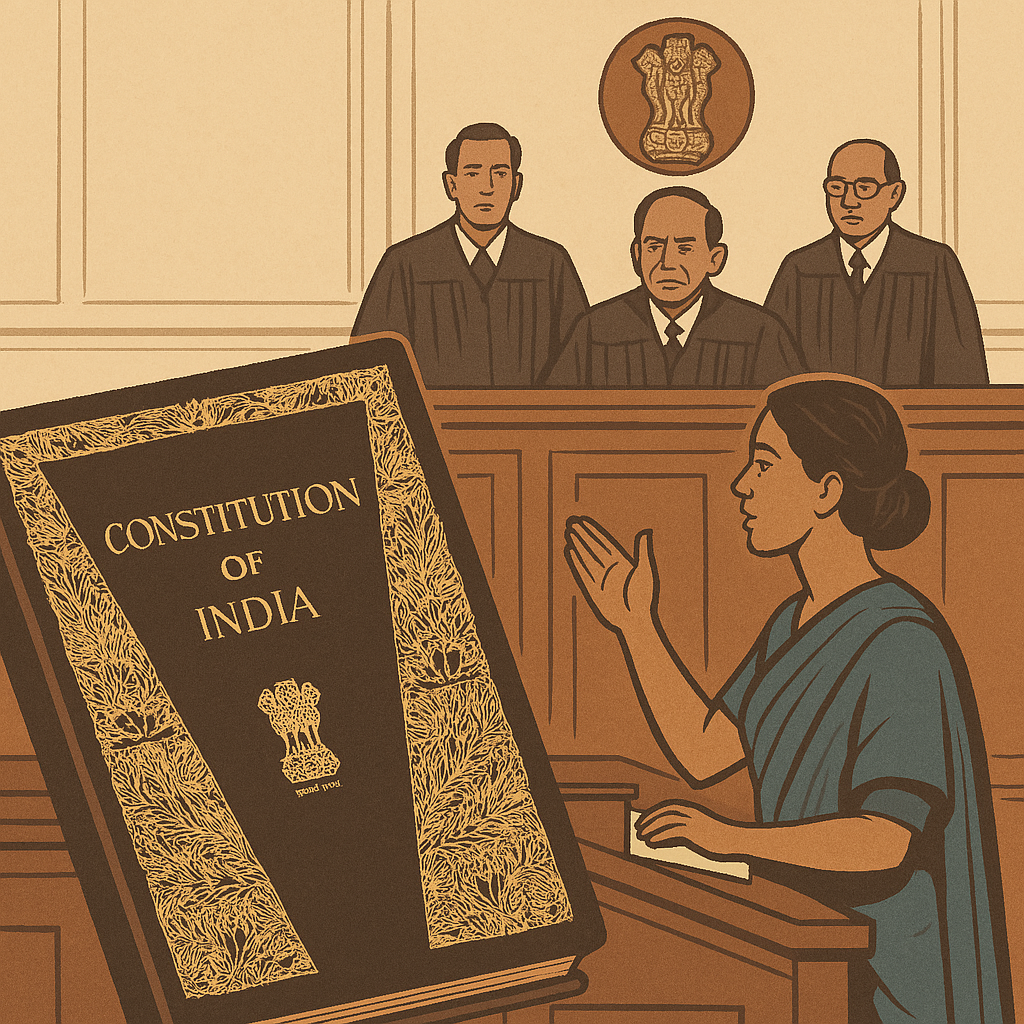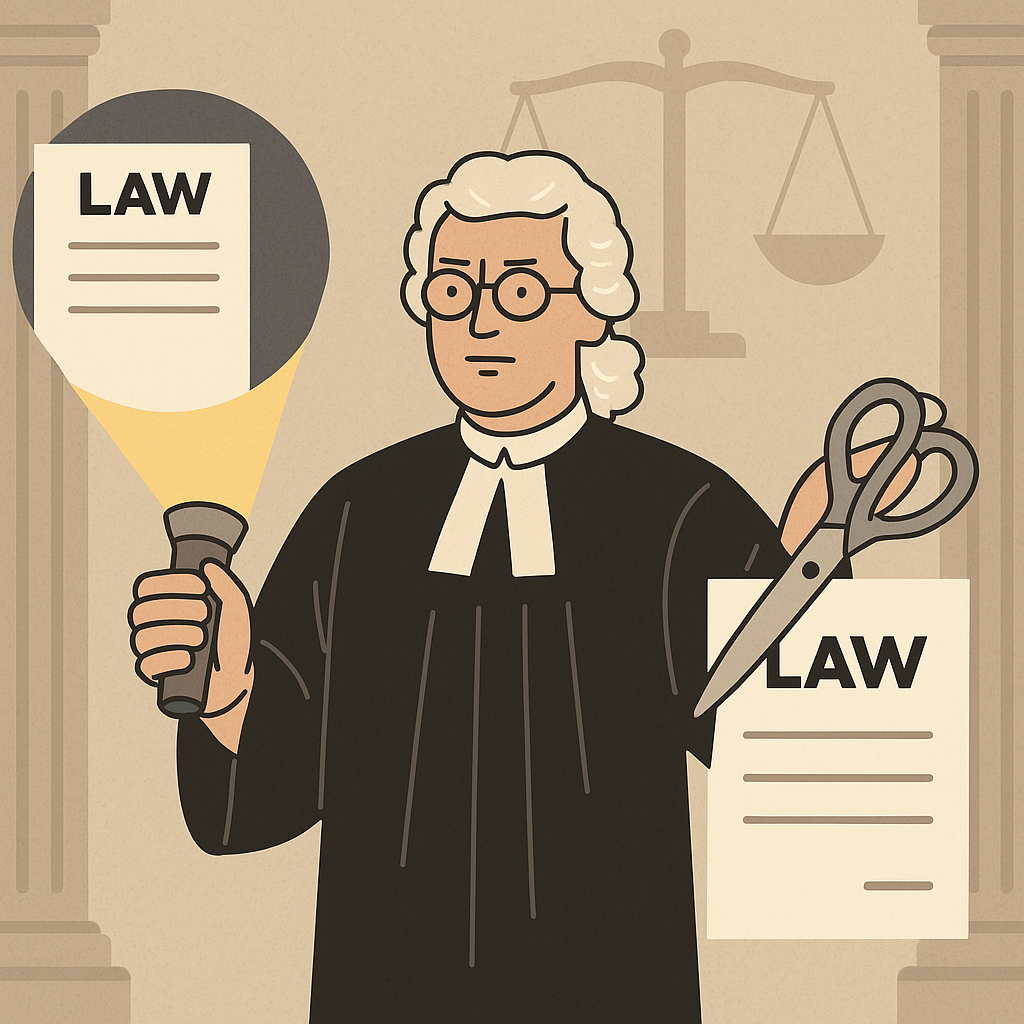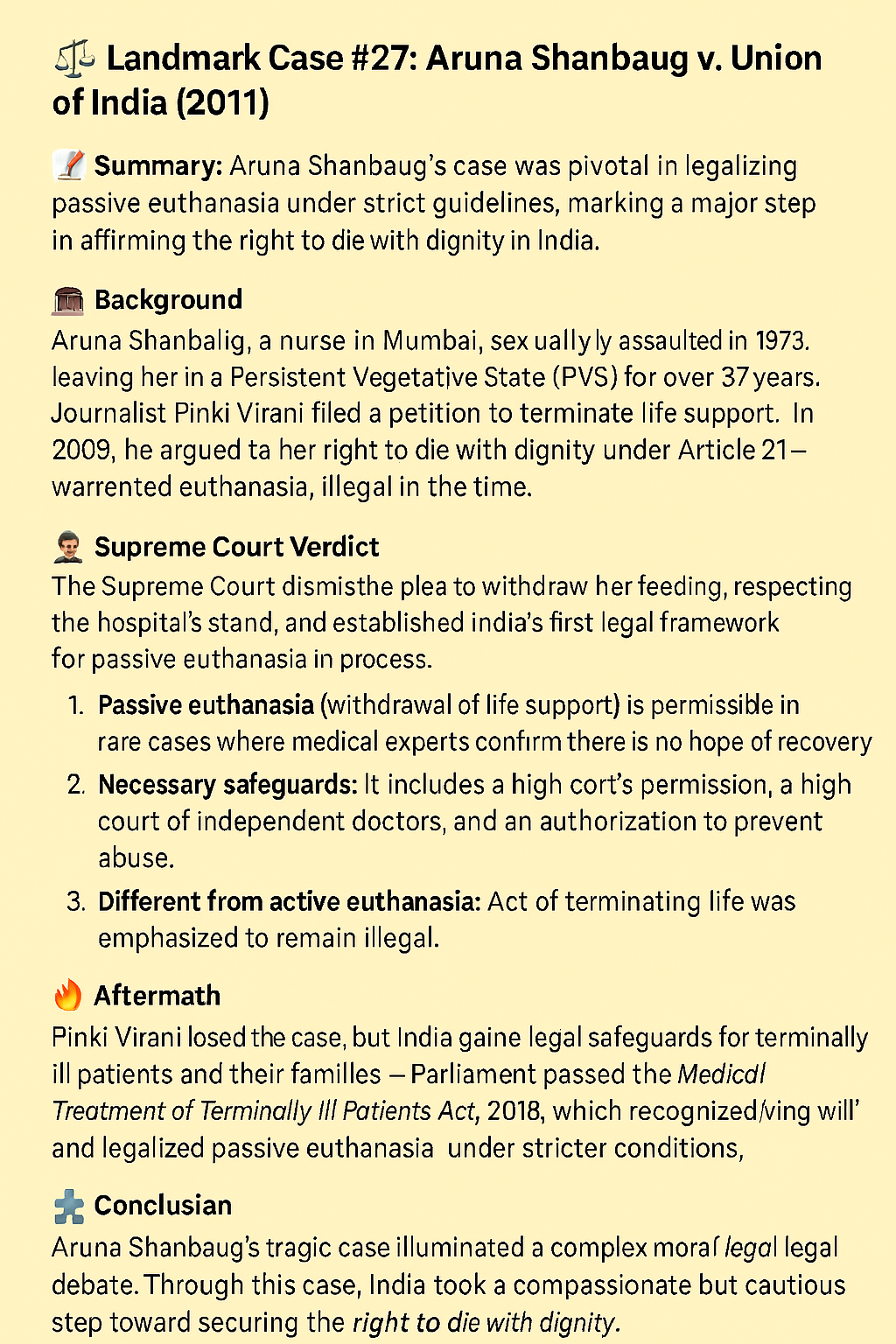⚖️ Doctrine of Colourable Legislation: When the Law Hides Its Real Purpose
The Doctrine of Colourable Legislation prevents lawmakers from bypassing constitutional limits by disguising a law’s real objective, ensuring legislative honesty and accountability. 📚 Introduction In a democracy, laws must be made for legitimate purposes, and within the powers granted by the Constitution. But what if a legislature pretends to make a law on one subject, while actually aiming to control something it has no authority over? That’s where the Doctrine of Colourable Legislation comes into play. It says: “What cannot be done directly, cannot be done indirectly.” This doctrine stops lawmakers from doing indirectly what they are not constitutionally allowed to do directly. 🧠 What Is Colourable Legislation? The term “colourable” doesn’t mean anything colorful—it means “pretend” or “disguised.” So, a colourable legislation is a law that claims to be about one subject, but is actually made for another (unauthorized) purpose. ⚖️ Origin of the Doctrine The doctrine is based on the principle of separation of powers and constitutional limitations. Every legislature in India—whether it’s Parliament or a State Assembly—can only make laws on subjects assigned to it under the Seventh Schedule of the Constitution. If a law crosses that line, even in disguise, it is invalid. 📘 Landmark Case: K.C. Gajapati Narayan Deo v. State of Orissa (1953) The Orissa legislature passed a law aiming to abolish zamindari rights. A zamindar challenged it, claiming that the law targeted him personally, which the State had no power to do. The Supreme Court held that the law was not colourable, because the real object—land reform—was within the State’s power. However, this case clarified what would count as colourable legislation: When form and label of the law suggest one thing, But substance and reality show something else. 📘 Another Example: State of Bihar v. Kameshwar Singh (1952) A Bihar law took over large estates without fair compensation. It claimed to be about land reform, but actually targeted specific individuals unfairly. The Court found this to be colourable legislation and struck it down. ✅ Key Elements of the Doctrine Focuses on the true substance of the law—not just its wording Checks if the law masks its real intention Prevents legislative fraud or evasion Applies only when a legislature is exceeding its powers, not to policy decisions 🧾 How Courts Apply the Doctrine Examine the subject matter and objective of the law Check if the legislature had competence to make the law Identify whether the law’s true effect intrudes into another’s domain If the answer reveals dishonest or hidden intent, the law is struck down. ❌ What It’s Not It’s not about how fair or useful a law is It’s about legislative competence and genuineness of intent A bad policy isn’t colourable—a dishonest one is 🧩 Conclusion The Doctrine of Colourable Legislation is like a lie detector for laws. It ensures that every law passed by a legislature is genuine, honest, and within its constitutional boundaries. It reminds lawmakers that the Constitution doesn’t just care about what you say—but what you’re really trying to do.



